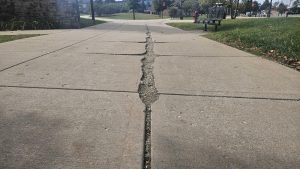Library likely to lose study space
February 1, 1990
Even with fewer periodicals at Founder’s Memorial Library, NIU needs to reduce study space and use off-campus storage.
“We have been aware of the problems facing the library for some time; however, we are coming to the point where something will have to be done,” said NIU Provost Kendall Baker.
The space crunch leaves the library with three alternatives: off-campus storage, reduction of study space or expansion of the library, Baker said.
“Loss of study space is inevitable,” NIU Library Director Steve Marquardt said. The library needs “social and study space,” but the materials need to be put somewhere, he said.
Baker said off-campus storage and the elimination of study space must be considered now because hopes for an expansion to the library might not be realized until the mid-nineties.
Marquardt said the library requested $59,000 for increased shelving, the majority to be added on the fourth floor and the periodicals area next fall.
Library officials will try to arrange the floorplan to keep the largest amount of seating space, Marquardt said.
Library Clerk Cliff Golden said the general reference area of the library also needs to be rearranged because of new computer networks to be added this summer or fall.
“Although this will greatly improve our reference services, it also takes up space,” Golden said.
NIU will switch to a computerized reference system, but for now it must make room for manual and automated systems, he said.
General Reference Librarian Ken Potts said putting periodicals on micro-fiche is one way to make space, but added many faculty members have opposed the switch because they prefer bound volumes.
The high cost of maintaining these periodicals is adding to the library’s funding problem.
Marquardt said since 1982 the cost of an average periodical subscription has jumped from approximately $74 to $145 per year. “This increase has presented a serious crisis.”
Library staff and faculty representatives began reviewing NIU’s periodical subscriptions last year, resulting in 6 percent, or about 11,000 subscription cancellations.
He said many of the cancelled subscriptions were rarely used and no longer of interest to faculty.
“It was a very difficult process and we tried to be very selective, but unfortunately we were left no choice but to cancel many subscriptions,” Marquardt said.






